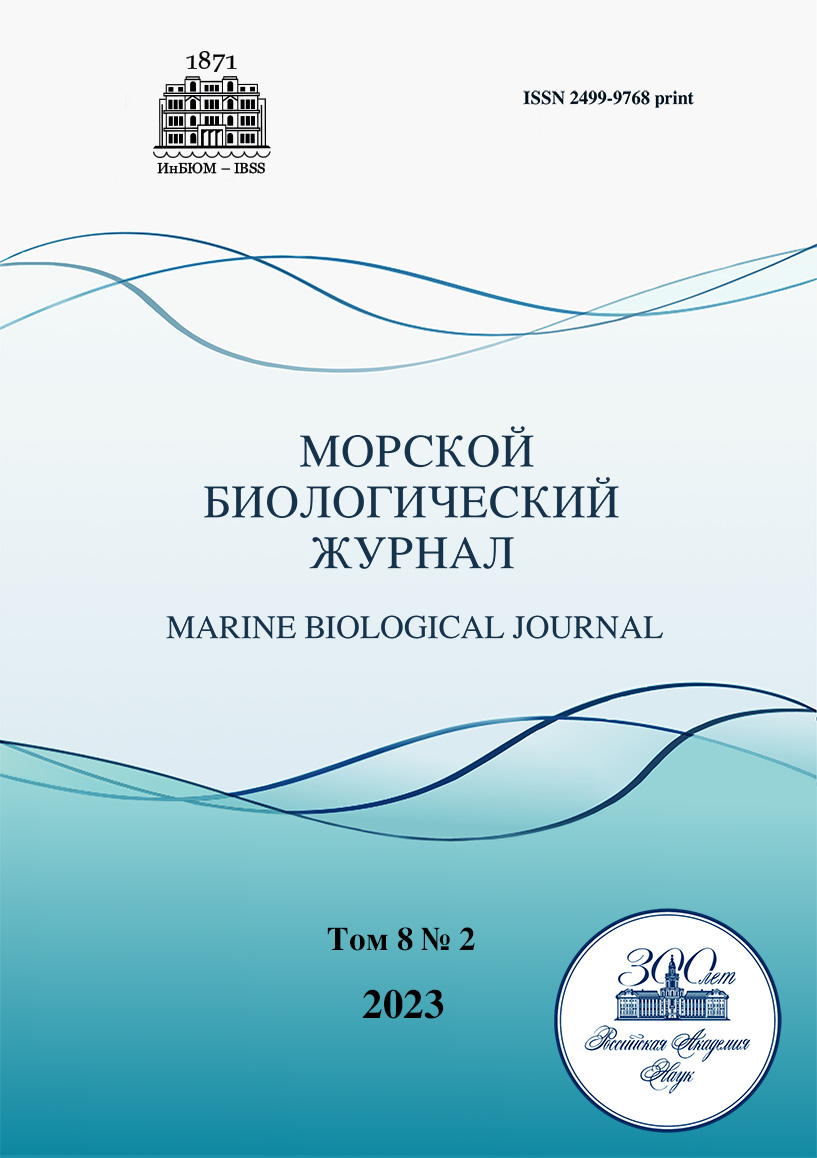Variability of the black scorpionfish, Scorpaena porcus Linnaeus, 1758 (Scorpaenidae), from two Black Sea localities
##plugins.themes.ibsscustom.article.main##
##plugins.themes.ibsscustom.article.details##
Abstract
Comparative investigation of morphological variability of the black scorpionfish, Scorpaena porcus Linnaeus, 1758, from two distant Black Sea localities – Foros village (Crimean Peninsula) and Malyi Utrish village (Krasnodar Krai) – was carried out. Due to sexual dimorphism in the black scorpionfish and small abundance of males in the samples, only mature females were analyzed. A total of 54 individuals were examined (29 from Foros and 25 from Malyi Utrish). We used 5 meristic and 26 morphometric characters. In the meristic characters, there were no region-related differences between black scorpionfish females from Foros and Malyi Utrish; in the morphometric characters (maximum body height, length of the first dorsal fin, distance between pectoral and abdominal fin, length of snout, eye diameter, and length of lower jaw), the differences were statistically significant. The canonical discriminant analysis showed that S. porcus females from Foros were correctly classified with an accuracy of 97%, while females from Malyi Utrish – with an accuracy of 100%. It was suggested that the obtained results are a manifestation of modification variability. However, there were no significant differences between black scorpionfish females from two localities in the total length and body mass, which could result from differences in trophic conditions and fish abundance. This may indicate the existence of a complex of modification and interpopulation variability in S. porcus from the investigated Black Sea localities. Though black scorpionfish pelagic eggs can be transported via sea currents, spatial isolation and limited migrations may lead to the formation of local populations of S. porcus. Nevertheless, analysis of genetic markers is required to test the hypothesis.
Authors
References
Правдин И. Ф. Руководство по изучению рыб. Москва : Пищевая промышленность, 1966. 370 с. [Pravdin I. F. Rukovodstvo po izucheniyu ryb. Moscow : Pishchevaya promyshlennost’, 1966, 370 p. (in Russ.)]
Смирнов А. И. Фауна Украины. Т. 8. Рыбы. Вып. 5. Окунеобразные (бычковидные), скорпенообразные, камбалообразные, присоскоперо-образные, удильщикообразные. Киев : Наукова думка, 1986. 320 с. [Smirnov A. I. Fauna Ukrainy. Vol. 8. Ryby. Iss. 5. Okuneobraznye (bychkovidnye), skorpenoobraznye, kambaloobraznye, prisoskoperoobraznye, udil’shchikoobraznye. Kyiv : Naukova dumka, 1986, 320 p. (in Russ.)]
Peskov V. N., Manilo L. G. Sex differences and sex identification in the small-scaled scorpionfish, Scorpaena porcus (Scorpaenidae, Scorpaeniformes). Vestnik zoologii, 2016, vol. 50, no. 4, pp. 355–362.


 Google Scholar
Google Scholar



